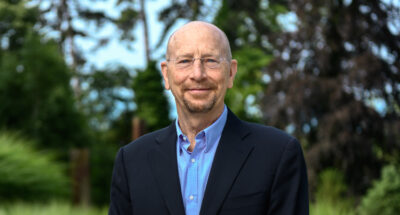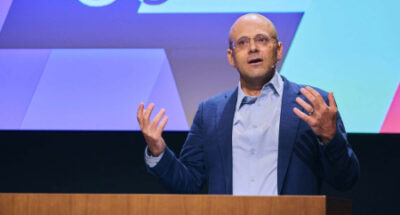
Halfway 2025: How to read two quarters under Trump 2.0
The mid-year economic outlook: How to read the first two quarters of Trump...

by Véronique Bogliolo Published January 19, 2024 in Team building • 5 min read
“If you want to go fast, go alone. If you want to go far, go together.” While the origins of this proverb are not crystal clear, its wisdom resonates, especially in the realm of leadership. In a world where the pursuit of excellence often focuses on individual talent, leaders must foster a culture of top teams – the ‘we’ instead of the ‘I’. That’s because any system will only be as strong as its weakest link. Ultimately, top teams eat top talent for breakfast.
In neuroscience, there is a state called being ‘below the line’. It is induced by elevated levels of cortisol (the ‘stress hormone’). Sensations of frustration, worry, and hopelessness prevail, and our focus shifts entirely to ourselves. But there’s also a state called being ‘above the line’, induced by a hormone called oxytocin. We feel open and engaged, showing courage, inquisitiveness, and contribution as part of a greater whole. This is a state of mind that is essential for any functional team.
Our state of mind largely determines how we compute and respond to the same set of facts. For example, something as simple as the ‘ping’ of an email arriving in your inbox can either create irritation or a sense of opportunity. From an evolutionary point of view, the need for collaboration, group harmony, and deep social ties (even at work) is coded into the human genome. The absence of these factors is what causes us to shift into a below-the-line state, one of stress and fear which is all too prevalent in today’s fast-paced world.
A first step to escaping this dilemma is to understand that teams and organizations are systems held together by human relationships. But this is often undermined in organizations by a ‘performance measurement mentality’ that assumes we are all created equal. It pits individuals and their unique value-adds against a uniform set of benchmarks, as well as each other. It showers one specific archetype with glory, reducing the platform for diverse voices that do not fit the narrow mold and limiting creative thought.
In a world of winners and losers, it is the ‘top talent’ that often gets rewarded with high-stakes projects and increased workloads. However, the personality types favored by organizations are often the least fit to handle the increased spotlight and pressure: the perfectionist over-achievers, with their loud inner critics, mercilessly driving themselves to ever-greater exhaustion in pursuit of pleasing the system. Have you ever noticed how the brightest lights in a department eventually burn out? This is where the aforementioned “weakest links”, those people on your teams not fitting the narrow and uniform criteria for what we call top talent, show their true value. Big-picture thinkers with even temperaments, who stay attuned to one another with ease and smooth out the relationships in your system, keep our star employees from grinding to a halt and dipping below the line. It is not about giving top talent a support crew. It is about recognizing talent in its many facets. It is about shifting our thinking from top talent to top teams – in other words, from ‘I’ to ‘we’.

To do this, leaders must recognize the limitations of their organizational structures and performance measurements. While changing these structures may be beyond their immediate control, leaders can still shape the culture that exists within their teams. Shifting focus from top talent to fostering collaboration and an ‘above the line’ mindset requires the following intentional leadership behaviors:
Any top team in hierarchical structures starts with a leader who is deeply knowledgeable about their value system. Value-based team cultures that promote well-being do not simply emerge, they require a mold into which they can shape themselves. As leaders, you are that mold. You must be clear and vocal about your values and spend regular time with teams to find common ground.
You also have to make room for the human inside you – one that may need support, has a bad day, and can make mistakes and own them. This will allow your teams to stay true to their humanity, remain above the line, and adopt behaviors such as proactive care for one another, deep listening, respect, a sense of a common destiny, and mutual achievement.
The complexities and turbulences inherent to any organizational structure can derail even the most human top team. Lack of clarity around role expectations, growth direction, accountabilities, collaborative structures, and review processes are all recipes for disaster. Employees need to know where and who they are within this structure as well as where they are going and how the success of the team will be measured.
Setting these structures up is easy; staying abreast of them is less so. The key is communication and holding space in team meetings to focus on operational clarity. This allows leaders and their teams to address those misunderstandings that simmer under the surface.
Trust is the indispensable glue that holds a top team together – it is also the most difficult thing to get right. It is challenging enough to build and maintain alliances, friendships, or relationships with one person, never mind a group of people operating in dynamic environments filled with stressors beyond their control.
Yet, if we want innovative thought and creative ideas to flourish and drive our businesses forward, our teams must be able to operate without fear. There can be no retaliation for an idea that eventually does not shape up as expected, nor for honesty and constructive feedback. In the end, trust creates the kind of healthy debate and productivity that we will never see in teams operating in a trust deficit.
In conclusion, leaders have the power to shape the culture within their workplaces. By focusing on top teams rather than top talent, as well as cultivating a shared mindset and implementing key leadership behaviors, leaders can create environments that foster collaboration, innovation, and sustainable success.
For those of you interested in further study as to why your teams may not operate as the cohesive unit you wish for them to be, I highly recommend you read Patrick Lencioni’s classic “The Five Dysfunctions of a Team”, the executive summary for which you can find here.

Executive and Leadership Coach
Véronique’s practice is built on 25 years’ experience in international business. Throughout her career, which spanned functions as diverse as finance, business planning, sales, and marketing, Véronique led multicultural teams operating in a global environment. As a global marketing executive at Philip Morris International, she led brand-transformative projects, headed the global marketing innovation and intelligence team, and developed programs for emerging talent. A graduate of EM Strasbourg Business School, Véronique has earned a number of certifications, all among the best in class in the leadership field. She is a Certified Professional Co-Active Coach from CTI, a Professional Certified Coach, and an Advanced Certified Team Coach from ICF.

1 day ago • by Richard Baldwin in Leadership
The mid-year economic outlook: How to read the first two quarters of Trump...

July 4, 2025 • by Arturo Pasquel in Leadership
Susanne Hundsbæk-Pedersen, Global Head of Pharma Technical Operations at Roche, shares how she has navigated the various pivots in her career, and the importance of curiosity, optimism and energy. ...

July 3, 2025 • by Eric Quintane in Leadership
Entrepreneurial talent who work with other teams often run into trouble with their managers. Here are ways to get the most out of your ‘boundary spanners’...
 Audio available
Audio available
June 27, 2025 • by David Bach in Leadership
Business leaders today should identify their points of leverage – be it public influence, economic power, or industry collaboration – to quietly but effectively push back against policies that undermine democracy, said...
Explore first person business intelligence from top minds curated for a global executive audience